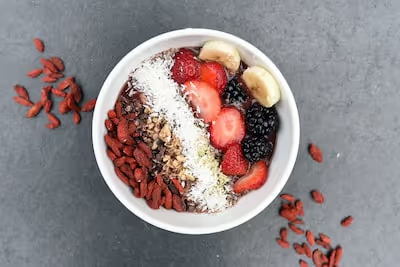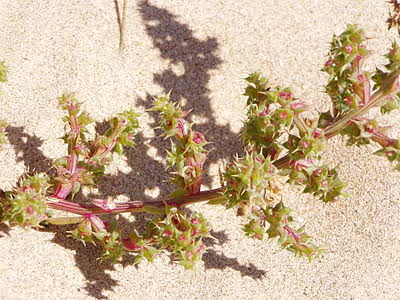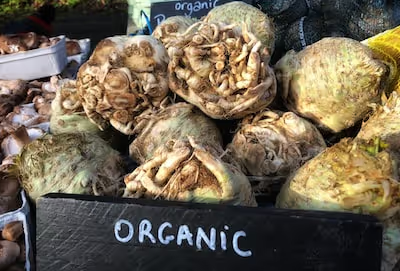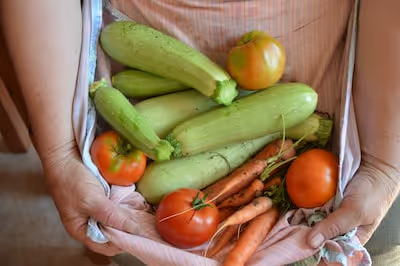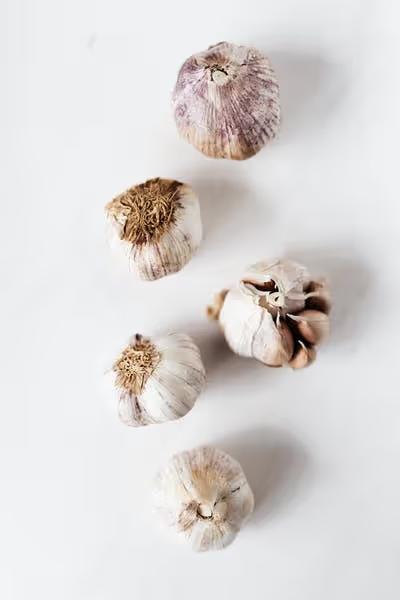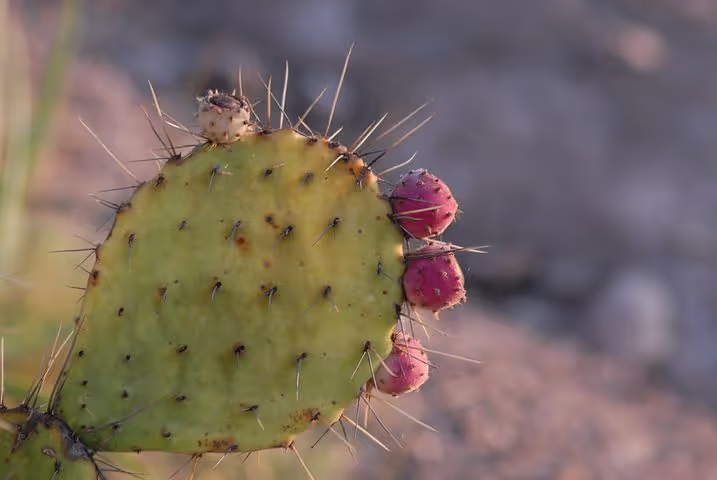Growing Chard: How to Plant, Care for, and Harvest at Home
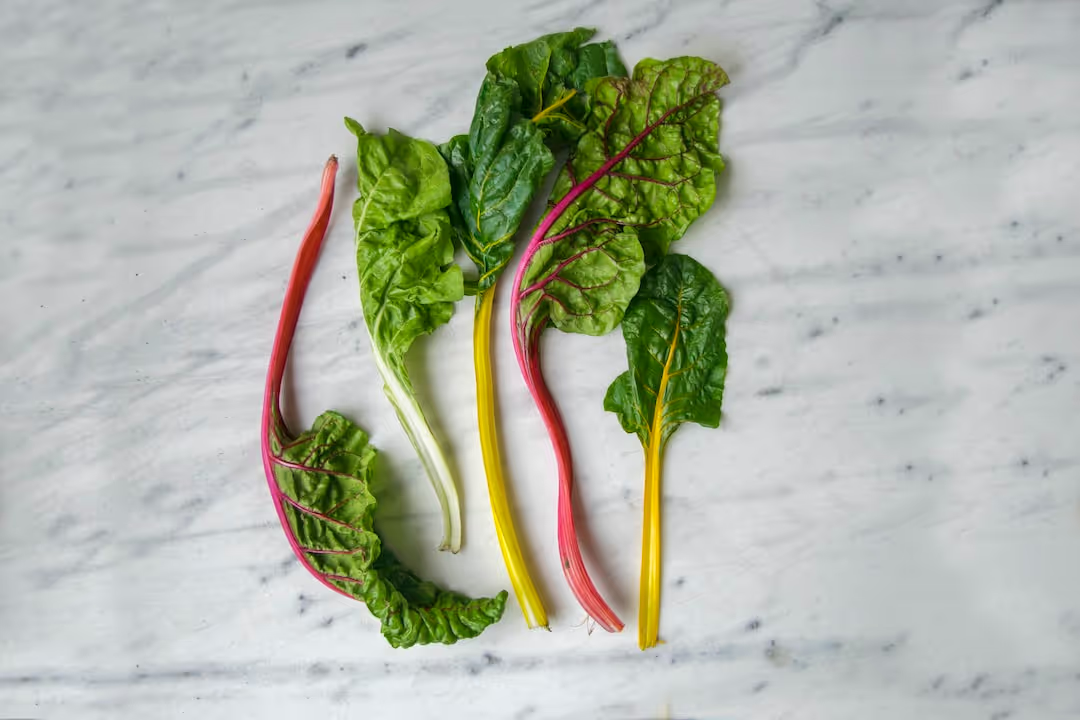
Growing Chard
Growing chard rewards the gardener with vibrant color, earthy sweetness and generous harvests. Start by planting seeds directly outdoors in fertile, well-drained soil, spacing them generously for optimum leaf development. Consistent watering and regular harvesting ensure continuous growth, making growing chard a satisfying, uncomplicated way to enrich your garden—and your dinner plate.
Cheatsheet: Home-Grown Chard
🌱 Sowing
- Direct sow seeds in spring/fall, 1/2 in (1 cm) deep, 4–6 in (10–15 cm) apart.
- Soil: Loose, rich, pH 6–7.
- Temp: 50–75°F (10–24°C); frost-tolerant.
- Soak seeds 24 hrs for quicker sprouting.
🌞 Growing On
- Sun: 6+ hrs/day for full yield; tolerates partial shade.
- Water: 1 in (2.5 cm) weekly; keep soil evenly moist.
- Thin to 12 in (30 cm) for larger leaves.
- Feed: Side-dress with compost midseason.
💪 Health & Nutrition
- Delivers 3x daily vitamin K in one cup.
- Packed with magnesium, iron, antioxidants.
- Harvest for continuous yields, boosting self-sufficiency.
✂️ Harvesting
- Ready in 55–65 days from sowing.
- Cut outer leaves at stems (leave center for regrowth).
- Yields from spring into fall; picks at any size.
🛠️ Tools and Products You'll Need
- Chard seeds (any color)
- Compost or organic fertilizer
- Mulch (straw or leaves)
- Hand trowel
- Scissors or garden knife
- Watering can or hose
-
Growing Chard: How I Plant, Care for, and Harvest at Home
I lean on Growing Chard when I want leafy greens that shrug off fickle weather and keep producing after other greens tap out. It tastes like spinach that took a gap year and came back bolder.
Climate and timing
Chard is a cool-season biennial grown as an annual, happiest at 50 to 75 F or 10 to 24 C. It tolerates light frosts, and with consistent moisture it rides out summer heat better than spinach.
I sow 2 to 4 weeks before last spring frost and again in late summer for fall harvests. In mild zones, I overwinter plants with a low tunnel to get a flush in early spring.
“Chard handles light frosts and offers a long picking window,” say extension guides from the University of Minnesota and the Royal Horticultural Society.
Soil, light, and bed prep
Full sun fuels color and yield, though afternoon shade helps in hot summers. Aim for a soil pH of 6.2 to 7.2 with high organic matter.
Work in 2 to 3 inches or 5 to 8 cm of finished compost before planting. In containers, I use a peat-free potting mix with added compost and a slow-release organic fertilizer.
Direct sowing and transplants
Chard “seeds” are actually seed clusters, so expect multiples per spot. I soak seedballs 6 to 8 hours, then sow 0.5 to 0.75 inches or 1.2 to 2 cm deep.
Space 8 to 12 inches or 20 to 30 cm between plants, with 18 to 24 inches or 45 to 60 cm between rows. For baby leaf, broadcast thickly and cut at 3 to 5 inches or 7 to 12 cm.
“Each seed cluster can produce several seedlings,” note commercial seed guides like Johnny’s Selected Seeds, so thin early for strong crowns.
Transplants work, but I keep them small. Anything older than 4 weeks sulks after transplant and bolts sooner if chilled.
Watering, feeding, and mulch
Chard wants steady moisture. I target 1 to 1.5 inches or 25 to 38 mm of water per week, more in heat on sandy soils.
Mulch 1 to 2 inches or 2.5 to 5 cm to cool roots and hold moisture. I side-dress with a nitrogen-leaning organic feed midseason to keep new leaves coming without watery growth.
Heat, cold, and bolting
Cold snaps under 50 F or 10 C for extended periods can trigger vernalization, which pushes a flower stalk later. Heat does not ruin chard if water is consistent and roots are mulched.
If plants threaten to bolt, harvest hard and shade with 30 percent cloth. Young regrowth tastes better than old leaves in a heatwave.
Pest and disease playbook
- Leaf miners: serpentine trails in leaves. Exclude with row cover from day one, remove infested leaves, rotate beds away from beets and spinach.
- Aphids: sticky leaves and ants. Blast with water, release or protect syrphid flies and lady beetles, and spot-spray with insecticidal soap.
- Slugs and snails: ragged holes and slime. Use iron phosphate bait, beer traps, and morning hand-picks.
- Flea beetles: pinholes in baby leaves. Early covers help, or grow baby leaf densely for quick cuts.
- Cercospora and downy mildew: spots or patches. Improve airflow, water early in the day, and remove infected leaves promptly.
I rotate out of the beet family for at least 3 years to cut miner and leaf-spot pressure. Clean edges and weed control reduce pests hitchhiking in.
Harvest rhythm
I practice cut-and-come-again. Take outer leaves with a knife, leave the crown, and plants reshoot for months.
Baby leaves are ready in 25 to 30 days. Full-size leaves hit 50 to 60 days, and a single plant can give 1 to 3 pounds or 0.5 to 1.4 kg across a season under good care.
Stems cook like celery, leaves like spinach. I chill unwashed leaves in a loose bag with a towel for 3 to 5 days, then wash just before cooking.
Container growing
Go big for thick stems. I plant one large chard per 5-gallon or 19-liter pot, or three in a 20-inch or 50-cm wide trough.
Fertilize lightly every 2 to 3 weeks with fish or seaweed feed. Keep pots shaded from late-day scorch to prevent limp leaves.
Varieties I rate
- ‘Fordhook Giant’: broad, glossy leaves and thick white petioles. My workhorse for volume and classic flavor.
- ‘Bright Lights’: rainbow stems that sell themselves. Slightly milder leaves and great for kids’ gardens.
- ‘Rhubarb’ or ‘Ruby Red’: red stems with beet-like bite. Stunning in beds and salads.
- ‘Lucullus’: heat-tolerant, ruffled leaves, vintage taste. Stays tender longer.
- ‘Silverado’: tidy habit for containers. Clean, upright stems for easy harvest.
- Leaf beet “Perpetual Spinach”: not true spinach, but chard’s cousin with tender, spinachy leaves that hold in summer.
Purchase and gear guide
- Seeds: choose fresh stock packed for the current year. Look for varieties with leaf spot tolerance if your summers run humid.
- Row cover: light grade around 0.5 oz or 17 g for insect exclusion without heat build. Use hoops to avoid leaf abrasion.
- Soil test kit: confirm pH and baseline nutrients before piling on fertilizer. Chard likes steady, not heavy, feeding.
- Watering: a simple timer and drip line pay dividends in leaf quality. Even moisture prevents bitterness and curling.
- Harvest knife: a narrow, sharp blade speeds clean cuts and protects crowns.
Companions and rotation
I tuck chard beside onions, garlic, and dill, which distract aphids and miners. Avoid following beets or spinach to break pest cycles.
Marigolds pull in hoverflies. Beans nearby fix a little nitrogen and share space well.
Overwintering and seed saving
In zones with winters above 15 F or minus 9 C, I mulch crowns and use low tunnels for winter salads. Expect a spring bolt, so harvest hard and replant fresh.
Saving seed requires isolation from beets and other chard for at least 1 mile or 1.6 km, since wind moves pollen. Stake seed stalks and dry seed thoroughly before storage.
Kitchen notes and nutrition
Stems love a slow sauté with garlic and a splash of vinegar, leaves finish fast in the same pan. Salt late to avoid watery greens.
USDA FoodData Central lists chard as rich in vitamins K, A, and C, plus magnesium and potassium. That nutrient load rewards steady picking with steady energy.
“Target 1 to 1.5 inches of water per week,” advise multiple U.S. extension services, to hold texture and stave off bitterness.
Troubleshooting quick hits
- Bitter leaves: bump irrigation, mulch, harvest younger leaves, and add afternoon shade.
- Pale new growth: feed lightly with nitrogen and check pH. Cold soil also slows uptake.
- Yellow margins: uneven watering or salt build-up in pots. Flush containers deeply.
- Brown spots with halos: remove affected leaves, improve spacing, and water at soil level.
- Plants flop midday: normal in heat. If they fail to perk by evening, water earlier and mulch.
Anecdotes from the beds
I once cut the same ‘Fordhook’ clump every Saturday from April to November, a steady pile of greens for omelets and dumplings. The trick was ruthless picking, an inch of straw mulch, and never letting the bed dry out.
In a heat spike, I clipped leaves smaller than my hand for sweeter plates. Big leaves went to chard stem pickles that outlasted the summer.
Credible sources I trust for Growing Chard
- University of Minnesota Extension, vegetable production guides for Swiss chard.
- Royal Horticultural Society, chard and leaf beet cultivation pages.
- USDA FoodData Central, nutrient data for Swiss chard.
- UC ANR and Oregon State University Extension, leaf miner and leafy greens IPM notes.
- Johnny’s Selected Seeds and Fedco Seeds, variety descriptions and seed physiology notes.
Frequently Asked Questions About Growing Chard
What is the ideal spot to plant chard in my garden?
Chard thrives in a location receiving full sun to partial shade, getting at least 4-6 hours of sunlight daily. Select an area with fertile, well-drained soil rich in organic matter for optimal growth.
How far apart should chard plants be spaced?
To encourage healthy leaf development, plant chard seeds or seedlings approximately 12–18 inches (30–45 cm) apart, maintaining rows at about 18–24 inches (45–60 cm) distance.
When should I start planting chard outdoors?
You can directly sow seeds outdoors about 2–4 weeks before the last expected frost date in spring, as chard is moderately frost-tolerant. For continuous harvesting, plant additional seeds every 2–3 weeks until late summer.
How often and how much water does chard require?
Chard requires consistent watering, roughly 1–1.5 inches (2.5–4 cm) per week. Maintain evenly moist soil without causing waterlogging to support vigorous growth and prevent leaf stress.
What's the best organic fertilizer or nutrient source for chard?
Enrich garden beds before planting with compost or well-aged manure. During the growing season, applying diluted organic seaweed or fish emulsion fertilizer every 4–6 weeks encourages continuous leafy growth.
What pests commonly attack chard, and how do I manage them?
Common chard pests include aphids, leaf miners, and slugs. Regularly inspect your plants and manually remove pests or damaged leaves. For persistent pests, use organic treatments like insecticidal soap or neem oil.
How and when do I harvest chard leaves to encourage continuous growth?
Begin harvesting outer chard leaves once they reach 6–8 inches (15–20 cm) in length, typically 50–60 days after planting. Snip individual leaves about 1 inch (2.5 cm) above soil level, leaving younger leaves at the center intact to promote ongoing production.
Can chard be grown successfully in containers?
Absolutely. Choose a container at least 12 inches (30 cm) deep to accommodate healthy root development. Use quality potting mix enriched with compost, ensure adequate drainage, and keep the soil consistently moist for successful container cultivation.
Growing chard is refreshingly simple—just rich soil, steady water, and a little patience. This leafy powerhouse gives you months of cut-and-come-again harvests, right up until frost. Don’t fuss; just keep the soil moist and pick the outer leaves while they’re young and tender. If you’re hooked on leafy greens, consider trying your hand at kale or even Swiss chard for more variety. With minimal effort, you’ll have a steady supply of vibrant greens that taste as bold as they look. That’s the real magic of growing chard—it rewards even the most laid-back gardener with color, flavor, and a sense of simple satisfaction.
The Homesteader's Take on Growing Chard
Maximizing Nutritional Yield
Chard leaves deliver high levels of vitamins A, C, K, magnesium and iron. Daily harvests of outer leaves encourage continual growth, keeping nutritional availability steady.
Season Extension Strategies
- Cold frames: Simple cold frames built from reclaimed wood and clear plastic raise nighttime temperatures by 5-10°F (3-6°C), enabling chard growth into colder months.
- Mulch insulating: A 4-inch (10 cm) mulch layer of straw or dry leaves insulates roots and preserves moisture, extending harvest into frost periods.
Soil Fertility Boosters
- Comfrey tea: Ferment comfrey leaves in water for one week. Dilute 1:10 parts water. Nutrients enrich soil, enhancing chard yields naturally.
- Rabbit manure: Fresh rabbit manure provides balanced nutrients and requires no composting before direct use around chard plants.
Seed Preservation Practices
Allow strongest chard plants to flower and dry naturally. Harvest seeds when pods turn brown; store dry at room temperature in airtight containers. Viable up to 4 years.
Livestock Integration Techniques
- Chicken forage: Chard thinnings and spent plants act as nutritious poultry feed, reducing feed costs.
- Goat-friendly greens: Excess chard leaves provide goats with supplemental forage, aiding overall livestock nutrition.
Find out which plants will thrive in your garden!
Answer a few fun questions and get custom plant recommendations perfect for your space. Let’s grow something amazing together!

start your season
